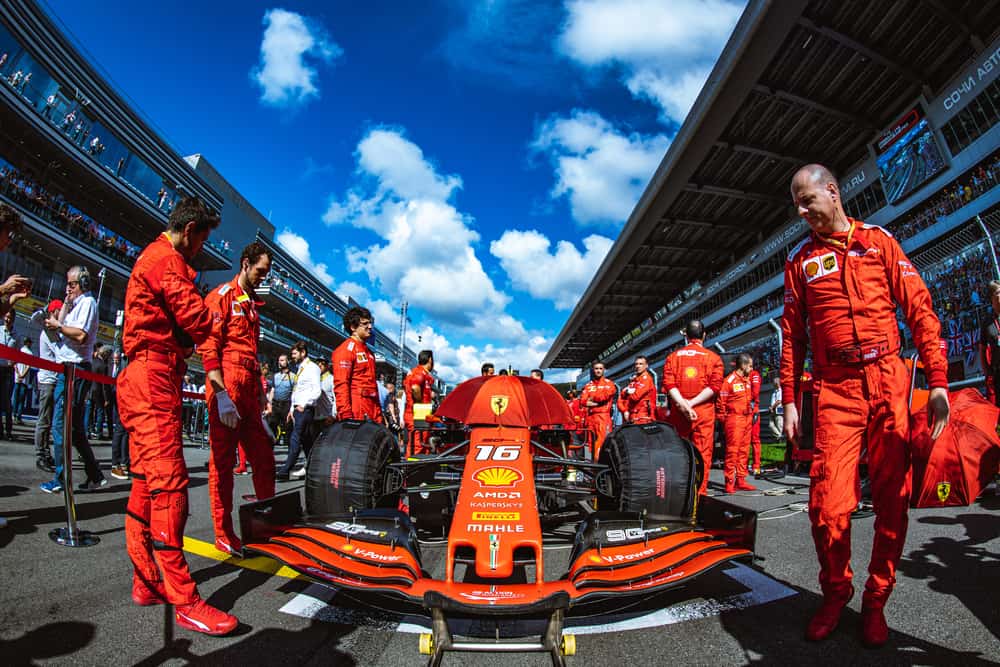
Unlocking Peak Performance: The Best Yoga Poses for Athlete Recovery
In the demanding world of athletics, pushing physical boundaries is not just encouraged, it’s essential for achieving peak performance. Athletes relentlessly train, striving for faster times, stronger lifts, and more agile movements. However, this relentless pursuit of excellence often comes at a cost: muscle fatigue, soreness, decreased flexibility, and an elevated risk of injury. While proper nutrition, sleep, and active recovery are widely recognized, one powerful tool often overlooked in an athlete’s recovery arsenal is yoga.
Yoga, an ancient practice integrating physical postures, breathing techniques, and meditation, offers a profound solution to the challenges athletes face. Beyond the stereotypical image of serene, hyper-flexible individuals, yoga for athletes is a pragmatic, science-backed approach to enhancing recovery, preventing injuries, and fostering mental resilience. It’s not about becoming a contortionist; it’s about optimizing the body’s natural healing processes, improving range of motion, and calming the nervous system.
This comprehensive article will delve into the myriad benefits of incorporating yoga into an athlete’s recovery routine and provide a detailed guide to the best yoga poses specifically tailored to address common athletic strains and accelerate recuperation.
Why Yoga is Indispensable for Athletes Recovery
Before diving into specific poses, understanding the foundational benefits of yoga for athletic recovery is crucial:
-
Enhanced Flexibility and Range of Motion: Repetitive athletic movements often lead to muscle imbalances and shortened connective tissues. Yoga gently lengthens muscles and fascia, improving flexibility and allowing joints to move through their full, natural range of motion. This not only reduces stiffness but also makes movements more efficient and less prone to injury.
-
Accelerated Muscle Recovery and Reduced Soreness: Deep stretches and specific postures in yoga help increase blood flow to fatigued muscles, aiding in the removal of metabolic waste products like lactic acid. This improved circulation delivers essential nutrients and oxygen, speeding up muscle repair and significantly reducing Delayed Onset Muscle Soreness (DOMS).
-
Injury Prevention: By addressing muscle imbalances, improving joint stability, and increasing proprioception (the body’s awareness in space), yoga acts as a powerful preventative measure against common athletic injuries such as hamstring strains, hip flexor issues, and shoulder impingement.
-
Improved Core Strength and Stability: Many yoga poses inherently engage the core muscles, which are vital for transferring power, maintaining balance, and protecting the spine in all athletic endeavors. A strong, stable core is fundamental for injury resilience and efficient movement.
-
Mind-Body Connection and Stress Reduction: The breath-work (pranayama) and meditative aspects of yoga activate the parasympathetic nervous system, shifting the body from a "fight or flight" state to "rest and digest." This reduces stress hormones like cortisol, which can hinder recovery and suppress the immune system. A calmer mind also translates to better focus and mental resilience in competition.
-
Enhanced Breath Control and Lung Capacity: Learning to breathe deeply and efficiently is a cornerstone of yoga. This translates directly to athletic performance, allowing for better oxygen delivery to muscles, improved stamina, and a quicker return to baseline heart rate during recovery periods.
-
Better Proprioception and Balance: Holding various yoga poses challenges balance and refines the body’s ability to sense its position and movement. This heightened body awareness can significantly improve coordination, agility, and overall athletic performance, reducing the likelihood of awkward falls or missteps.
Key Principles for Yoga-Based Recovery
To maximize the benefits of yoga for recovery, athletes should keep these principles in mind:
- Listen to Your Body: Never force a stretch or push into pain. Recovery yoga is about gentle restoration, not intensity.
- Focus on Breath: Connect each movement and hold to your breath. Deep, steady breathing enhances relaxation and deepens the stretch.
- Hold Poses Longer: For recovery, aim for longer holds (30 seconds to several minutes), especially in restorative poses, to allow muscles and fascia to release.
- Consistency Over Intensity: Regular, even short, yoga sessions are more beneficial than sporadic, intense ones.
- Modifications are Your Friend: Use props like blocks, straps, and blankets to support your body and make poses accessible.
The Best Yoga Poses for Athletes Recovery
Here are some highly effective yoga poses, specifically chosen for their ability to target common areas of tension and aid in an athlete’s recuperation:
1. Downward-Facing Dog (Adho Mukha Svanasana)
- How to: Start on hands and knees. Lift hips up and back, forming an inverted ‘V’ shape with your body. Hands shoulder-width apart, feet hip-width apart. Press through palms and heels (heels may not touch the floor).
- Why it’s great for athletes: A full-body stretch that lengthens hamstrings, calves, and Achilles tendons – crucial for runners and jumpers. It also strengthens arms and shoulders, decompresses the spine, and calms the nervous system. The inversion aspect aids circulation.
2. Low Lunge (Anjaneyasana Variation)
- How to: From Downward Dog, step one foot forward between your hands. Lower your back knee to the mat. You can keep your hands on the floor, on your front knee, or lift them overhead.
- Why it’s great for athletes: Deeply stretches the hip flexors of the back leg, which are often tight in athletes due to repetitive running, cycling, or sitting. Also opens the quadriceps and can strengthen the glutes.
3. Pigeon Pose (Eka Pada Rajakapotasana)
- How to: From Downward Dog, bring your right knee forward towards your right wrist, placing your right shin as parallel to the front of the mat as comfortable. Extend your left leg straight back. You can stay upright or fold forward over your front leg.
- Why it’s great for athletes: An intense, yet incredibly effective, hip opener. It targets the external rotators of the hip, piriformis, and glutes – areas that become notoriously tight in athletes, leading to lower back pain and sciatica. Essential for runners, cyclists, and those with explosive leg movements.
4. Supine Spinal Twist (Supta Matsyendrasana)
- How to: Lie on your back, hug both knees into your chest. Extend your arms out to a ‘T’ shape. Let both knees fall to one side, keeping your shoulders grounded. Look over the opposite shoulder.
- Why it’s great for athletes: Decompresses and mobilizes the spine, releasing tension in the lower back, obliques, and glutes. It aids in digestion and can be deeply relaxing for the nervous system after intense training.
5. Legs-Up-the-Wall (Viparita Karani)
- How to: Sit with one hip against a wall. Swing your legs up the wall as you lie back on your mat, so your legs are extended vertically. Rest your arms comfortably by your sides or on your belly.
- Why it’s great for athletes: A restorative pose that reverses the effects of gravity on the legs, reducing swelling and aiding lymphatic drainage. It’s incredibly calming for the nervous system, promotes circulation, and can alleviate tired or heavy legs after a long workout or competition.
6. Reclined Bound Angle Pose (Supta Baddha Konasana)
- How to: Lie on your back. Bring the soles of your feet together, allowing your knees to fall open to the sides. You can place blocks or blankets under your knees for support. Rest your hands on your belly or by your sides.
- Why it’s great for athletes: Gently opens the groin, inner thighs, and hips – areas that can become very tight, especially in athletes involved in kicking, lateral movements, or those who sit for extended periods. It’s a deeply relaxing and restorative pose.
7. Thread the Needle (Urdhva Mukha Pasasana variation)
- How to: Start on hands and knees. Thread one arm underneath your chest, bringing your shoulder and ear to the mat. Extend the other arm forward or rest it on your lower back.
- Why it’s great for athletes: Releases tension in the upper back, shoulders, and neck – common areas of stiffness for athletes, particularly those involved in throwing, swimming, or weightlifting. It gently stretches the rotator cuff muscles.
8. Cat-Cow Pose (Marjaryasana-Bitilasana)
- How to: Start on hands and knees, wrists under shoulders, knees under hips. Inhale, drop your belly, lift your chest and tailbone (Cow). Exhale, round your spine, tuck your chin and tailbone (Cat). Flow between the two.
- Why it’s great for athletes: A dynamic warm-up or cool-down for the spine. It improves spinal mobility, releases tension in the back and neck, and connects movement with breath. Excellent for improving spinal health and flexibility.
9. Supported Bridge Pose (Setu Bandhasana)
- How to: Lie on your back, knees bent, feet flat on the floor hip-width apart. Press into your feet to lift your hips. Place a block or bolster under your sacrum (lower back) for support. Relax your hips onto the prop.
- Why it’s great for athletes: A gentle backbend that opens the chest, shoulders, and hip flexors. It calms the brain, reduces anxiety, and stretches the abdomen and spine. The supported version allows for deep relaxation and release.
10. Child’s Pose (Balasana)
- How to: Kneel on the mat, big toes touching. Open knees wide or keep them together. Fold forward, resting your torso between or on your thighs. Forehead to the mat. Arms can extend forward or rest alongside your body.
- Why it’s great for athletes: The ultimate restorative pose. It gently stretches the hips, thighs, and ankles, while calming the brain and relieving stress and fatigue. It’s a safe haven to return to at any point during your practice to rest and reconnect with your breath.
Integrating Yoga into Your Athlete Recovery Routine
- Post-Workout: A short 10-15 minute yoga sequence focused on stretching and calming can significantly aid immediate recovery.
- Rest Days: Dedicate 30-60 minutes to a more comprehensive recovery yoga practice on your active rest days.
- Before Bed: A gentle 15-minute sequence can help downregulate your nervous system, promoting deeper, more restorative sleep.
- Listen to Your Body’s Needs: On days with specific soreness, focus more intensely on poses that target those areas.
- Seek Guidance: Consider taking a beginner’s yoga class or working with a yoga instructor who has experience with athletes to ensure proper form and maximize benefits.
Final Thoughts
For athletes, recovery is not merely a passive act but an active and crucial component of their training regimen. By strategically incorporating yoga into their recovery protocol, athletes can unlock a new dimension of physical and mental well-being. The best yoga poses for athletes’ recovery are those that systematically address common areas of tightness, improve flexibility, enhance circulation, and calm the nervous system.
Embracing yoga means investing in longevity, resilience, and sustained peak performance. It’s an invitation to move beyond just training the body to training the whole self, fostering a deeper connection that allows athletes not just to recover, but to truly thrive. So, unroll your mat, breathe deeply, and allow the ancient wisdom of yoga to become your modern-day secret weapon for superior athletic recovery.



